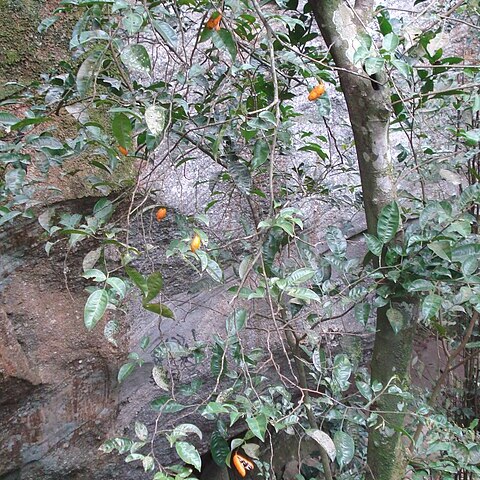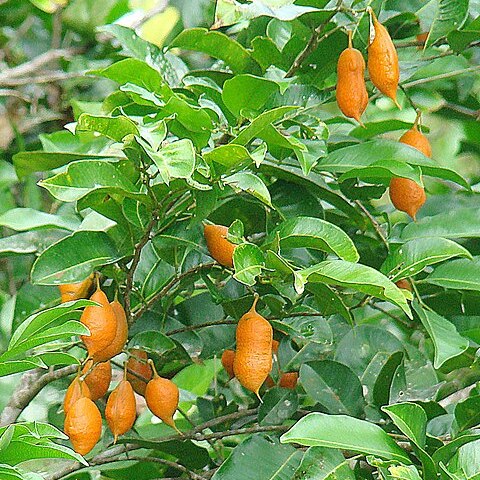Small tree to 10 m. tall, branchlets glabrous. Leaves 1-foliolate, stipulate, glabrous; petiole 2-20 mm. long, terete (especially basally) to narrowly alate-auriculate (especially apically); leaflet usually subcoriaceous, elliptic to ovate-lanceolate, bluntly acute to acuminate apically, rounded to cuneate basally, 4-20 cm. long, 2-8 cm. broad, with chief lateral nerves subparallel but confluent mar-ginally; petiolule about 1 mm. or less long, terete. Inflorescence 2-to 6-flowered, axillary or terminal, up to 10 cm. long, with axis lightly pubescent to glabrous; pedicels 5-20 mm. long, bearing globose buds about 8 mm. in diameter. Flower yellow, 1-petalate; petal irregularly orbicular, usually about 3 cm. tall and at least as broad, claw about 5 mm. long; stamens of 2 types, 8-12 larger longer ones at least 2 cm. long, and many shorter smaller ones less than 1.5 cm. long; anthers oblong, truncate, basally versatile, larger ones about 2 mm. long, smaller ones about 1 mm. long; ovary arcuate, long-stipitate, glabrous. Legume sigmoid-ovoid to asymmetrically oblongoid, subterete, up to 6 cm. long, attenuate-beaked, usually 1-seeded; seed prominently arillate, oblong-ovoid.
An evergreen tree. It grows 5-15 m tall. The crown is often irregular. The trunk is crooked and 10-40 cm across. The leaves can have one leaflet. The leaves are 6-15 cm long by 3-8 cm wide. The fruit are oval and 3-5 cm long by 1-2 cm wide. The fruit are red when ripe. There are black seeds in a white pulp.
style glabrous, about 6 mm. long; stigma obscurely bilobate. Legume glabrous, obliquely ovoid, caudate-beaked, apparently 2-valved, about 3.2 cm. long, 1.6-1.8 cm. broad and 1.2-1.6 cm. thick; seed 1, reniform, conspicuously arillate, about 2.5 cm. long.



